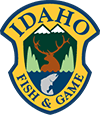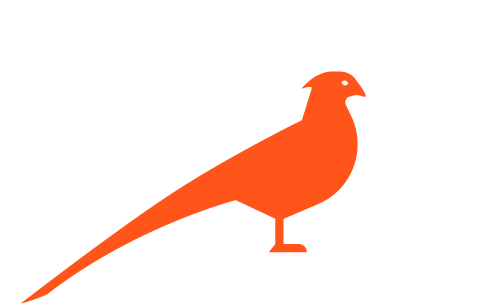Pheasant
HABITAT
On WMA’s, or near agriculture fields, in grassy habitat with sage or cattails.
TASTE
Tender white meat has a similar taste to chicken.
ABUNDANCE
Low to moderate populations statewide.
LICENSE, TAGS AND PERMITS NEEDED
Valid Idaho hunting license, WMA permit if hunting on a Wildlife Management Area or private land stocked by Idaho Fish and Game.
SPECIES INFORMATION
Ring-necked pheasants were first introduced into Idaho in the late 1800s and early 1900s, and now occupy suitable habitats in 42 of 44 counties. Pheasants are closely associated with agriculture and occur in varying abundance on or near farmland throughout Idaho. Pheasant populations, especially in southern Idaho, have declined concurrently with changes in irrigation practices and agricultural intensification.
Important habitat needs for pheasants include nesting and brood-rearing cover, brushy or woody escape-winter cover, winter food, and habitat juxtaposition. Pheasants preferentially nest and raise broods in non-row crops, herbaceous vegetation, especially grasslands, small grains, and hay. Nesting cover also serves as initial brood-rearing cover, as broods remain near the nest for three weeks after hatching. In southern Idaho, wetland areas with cattail served as an important winter cover.
Male pheasants are polygamous and will establish a territory and defend it from other males. Territories are maintained by crowing, boastful displays, and physically chasing intruding males. Although large areas of permanent nesting cover are preferred when available, other areas of residual herbaceous cover utilized by nesting pheasants include road ditches, fence lines, rights-of-way, waste areas, wetlands, and cool-season grain crops.
Pheasant diets primarily consist of seeds, grasses, roots, insects, wild fruits and nuts, and waste grain. Pheasant chicks will consume exclusively insects for the first 4 weeks of life; then shift largely to vegetable matter. Lack of winter food and cover was previously recognized as a limiting factor for pheasant populations in Idaho. Currently, reductions in quality nesting habitat and winter cover are seen as major limiting factors.
To provide additional pheasant hunting opportunities, IDFG stocks game-farm pheasants in 9 Wildlife Management Areas (WMAs; Fort Boise, C. J. Strike, Montour, Payette River, Niagara Springs, Sterling, Cartier Slough, Mud Lake, and Market Lake). Hunting in these areas requires a WMA Upland Game Permit and includes a lower bag limit of 2 birds/day, 6 birds in possession.
Idaho’s pheasant stocking program is operated as a ‘put and take’ operation and is not utilized to restore wild pheasant populations. Creating and maintaining suitable habitats is the primary method for restoring and maintaining self-sustaining wild pheasant populations. IDFG utilizes the Habitat Improvement Program (HIP) to cost-share with federal, state, and county agencies and private landowners to create and enhance pheasant habitat. IDFG also focuses on working with landowners enrolled in Federal Farm Bill programs to create habitat at the scale needed for population-level changes.

